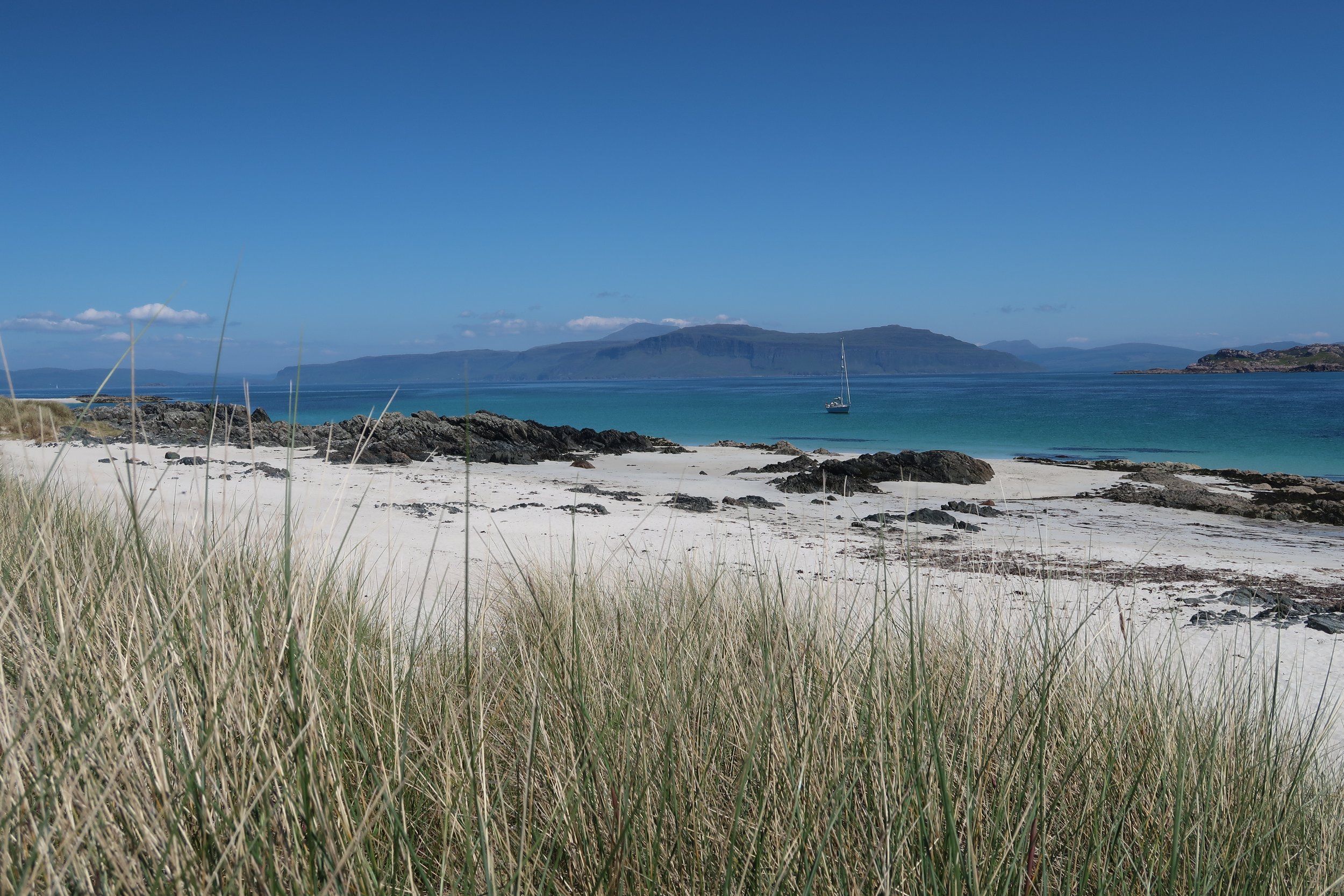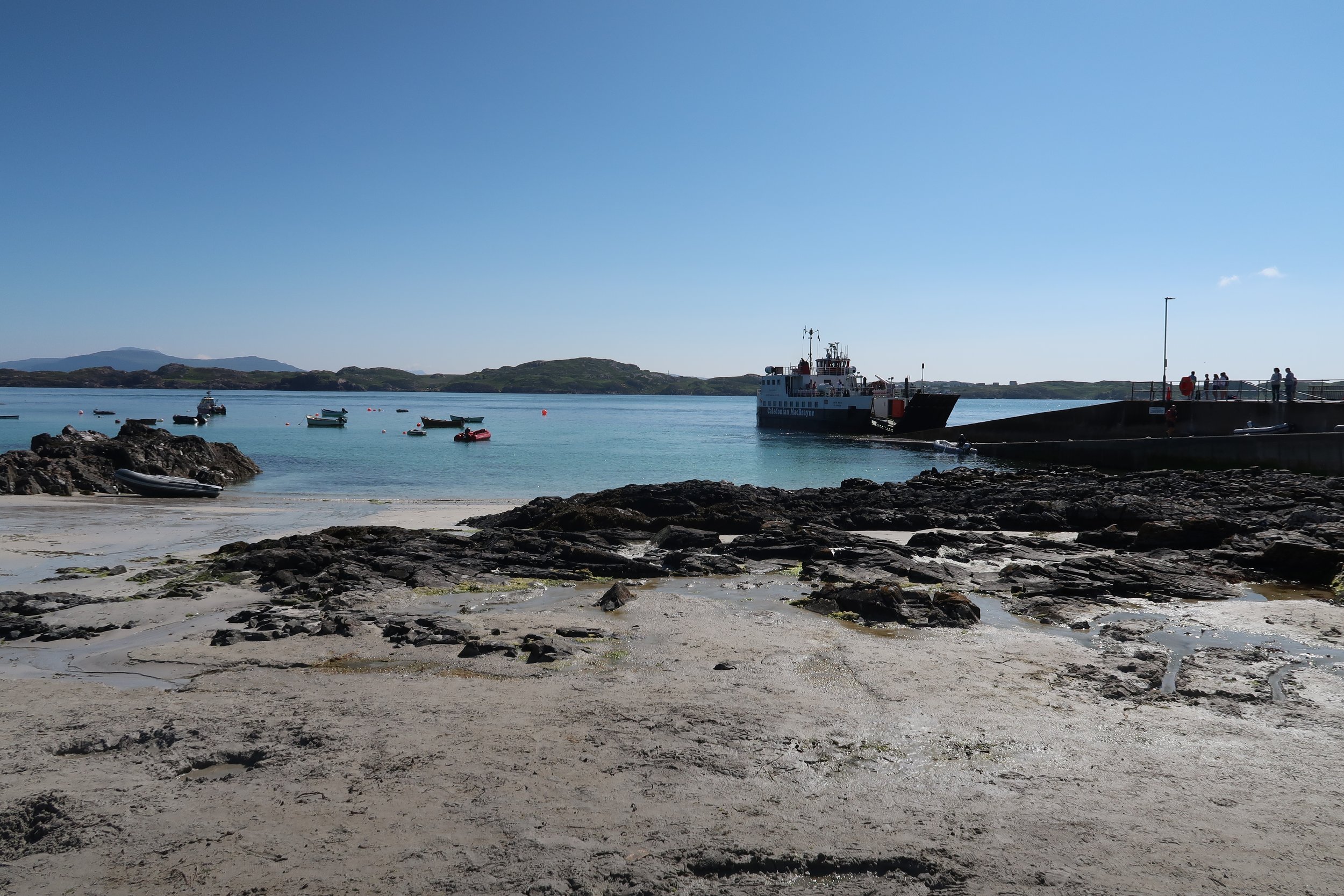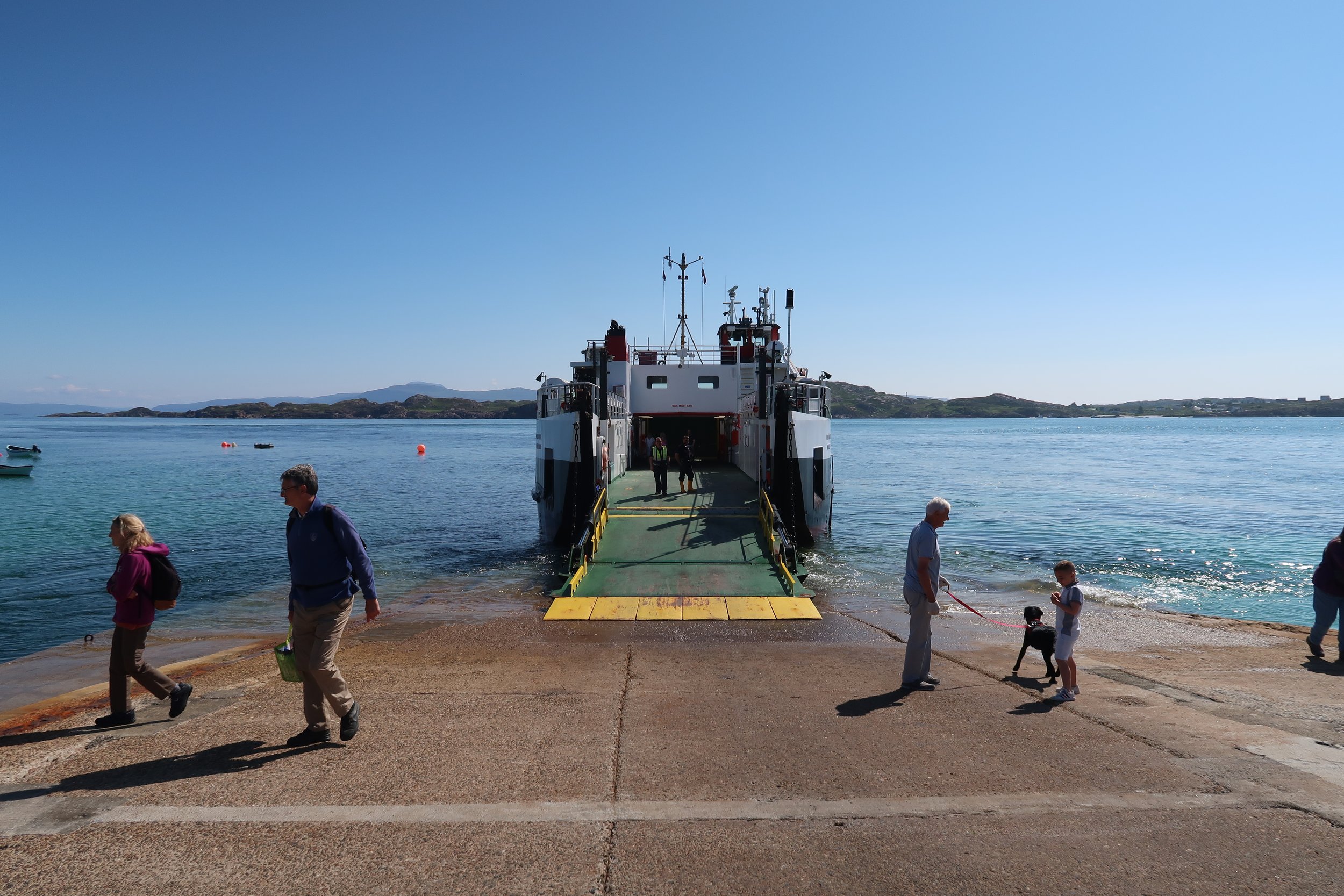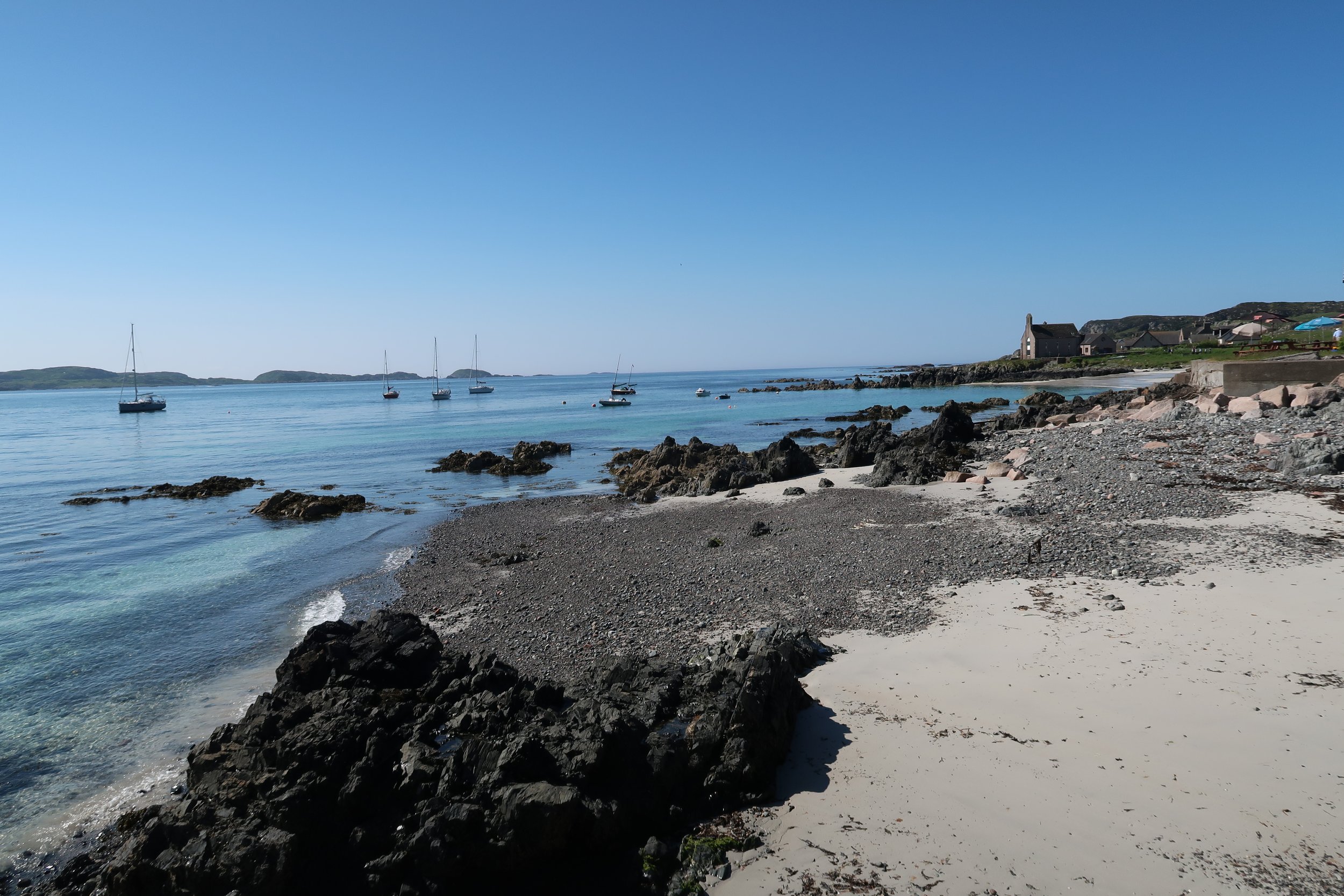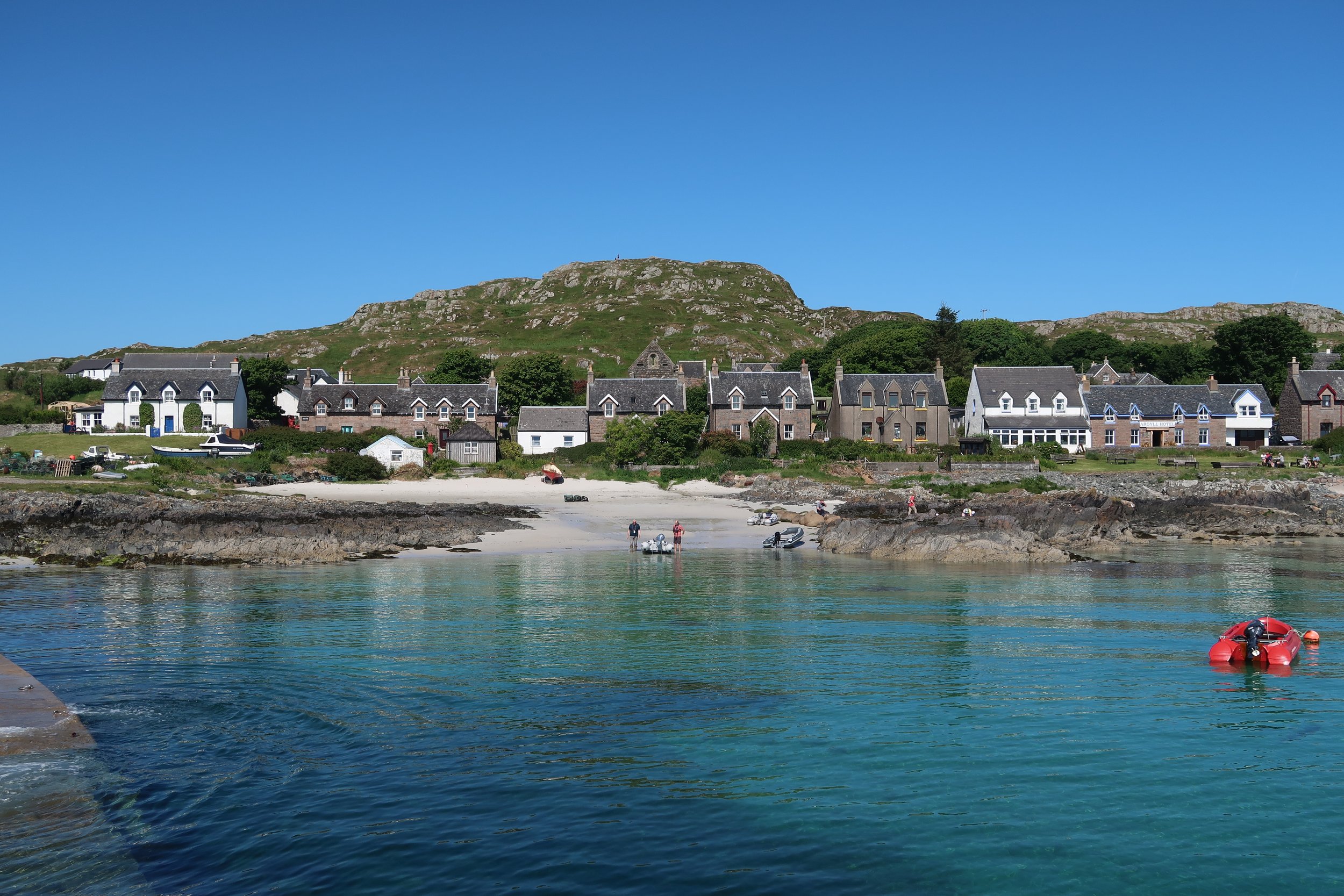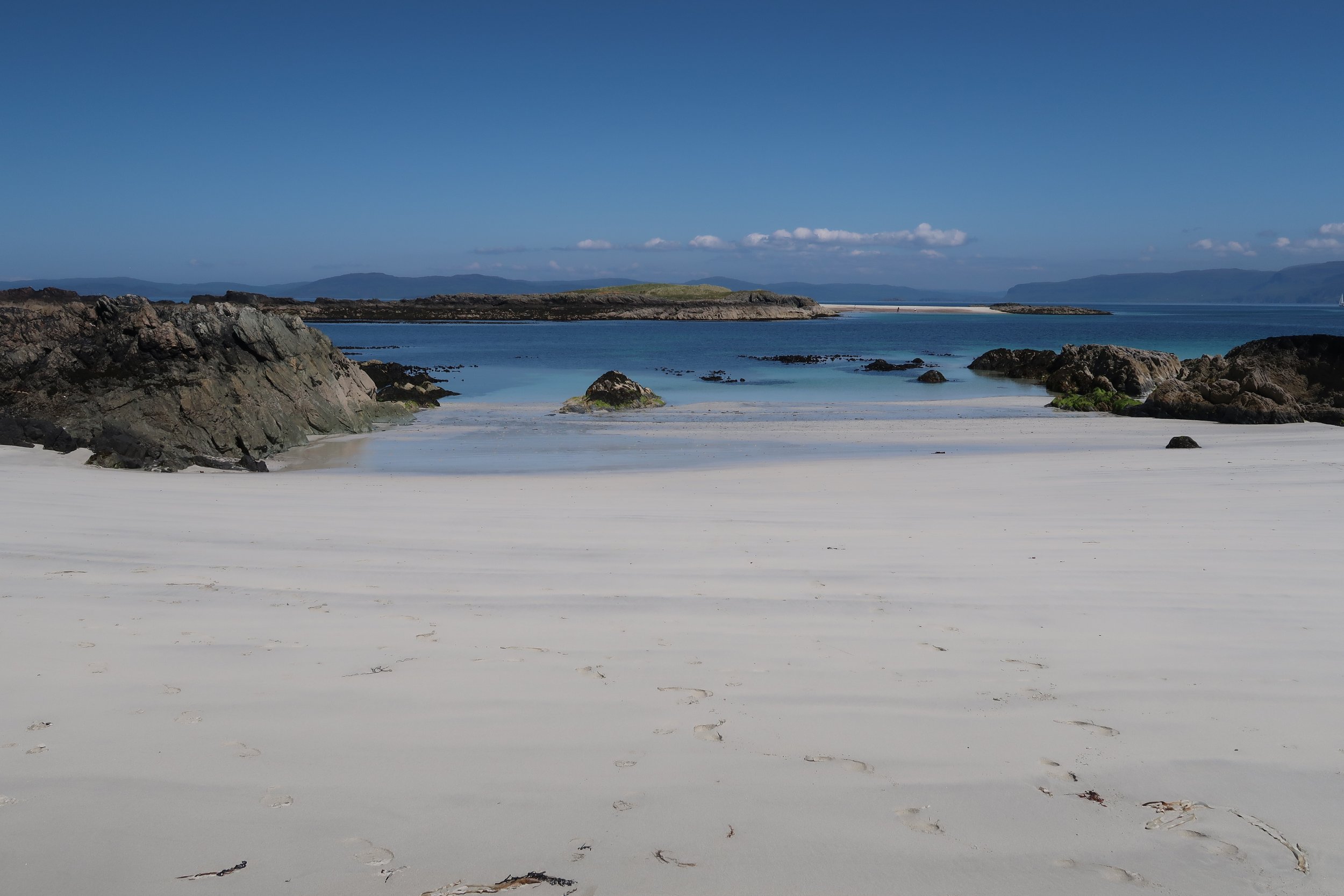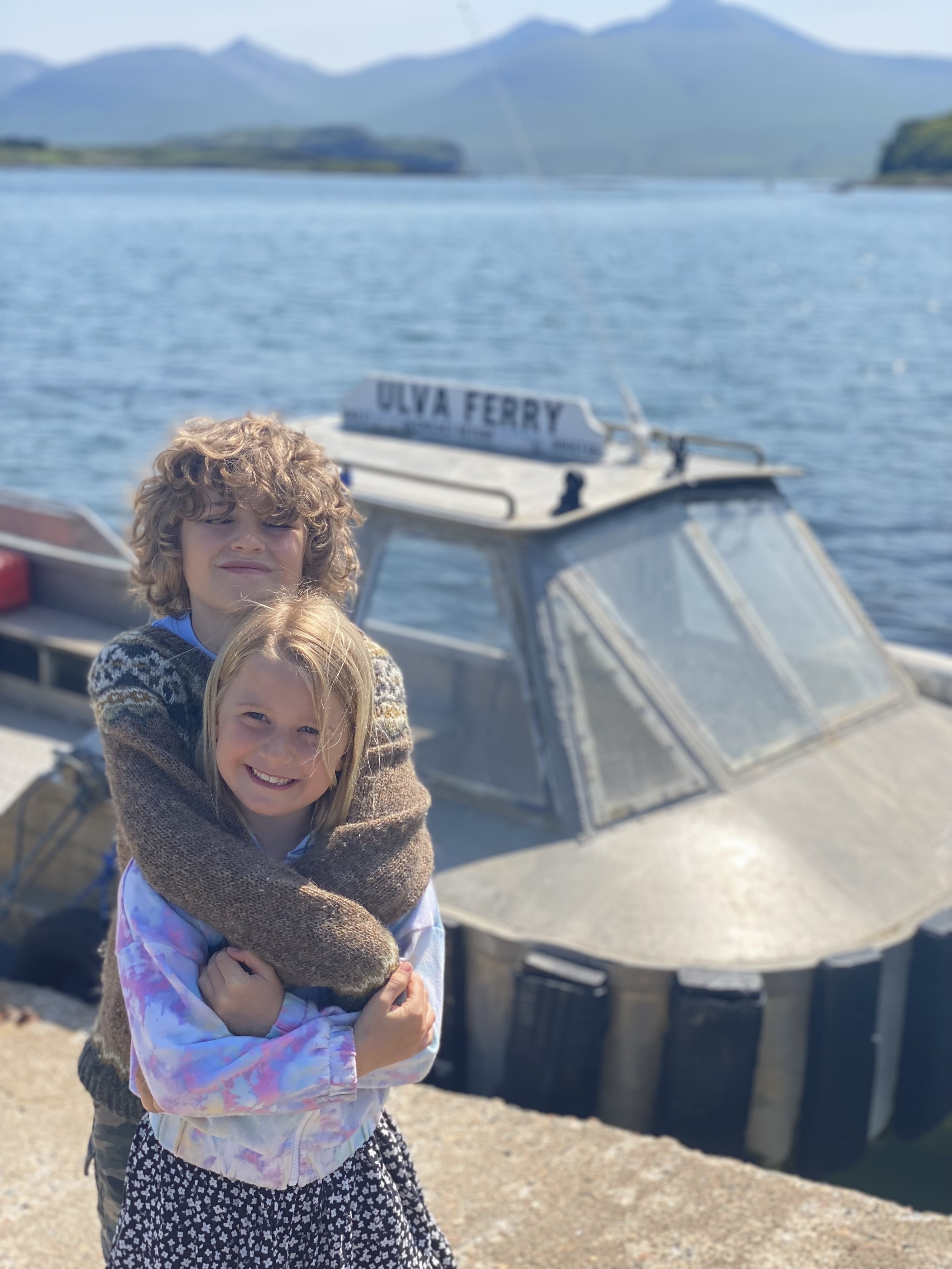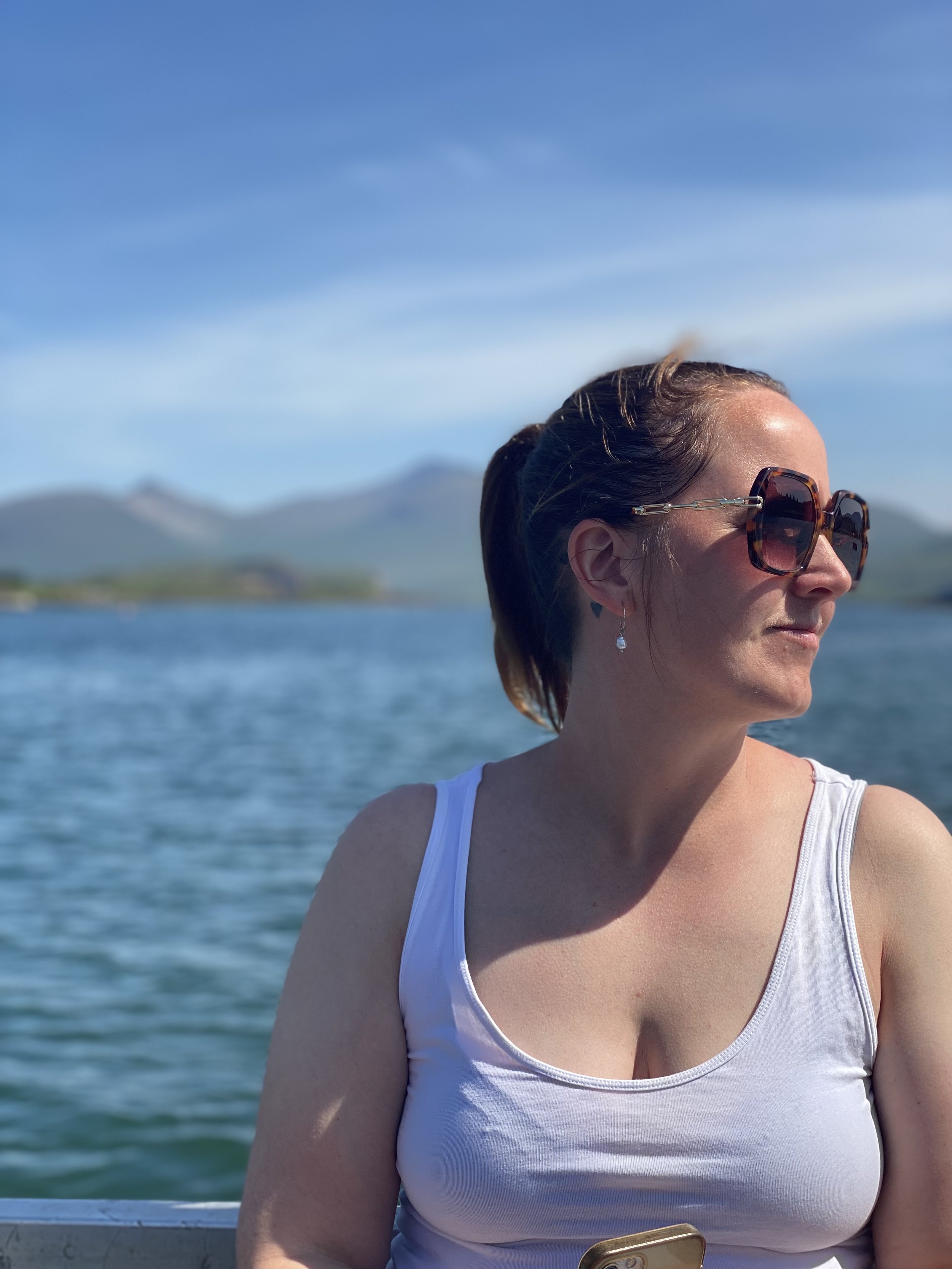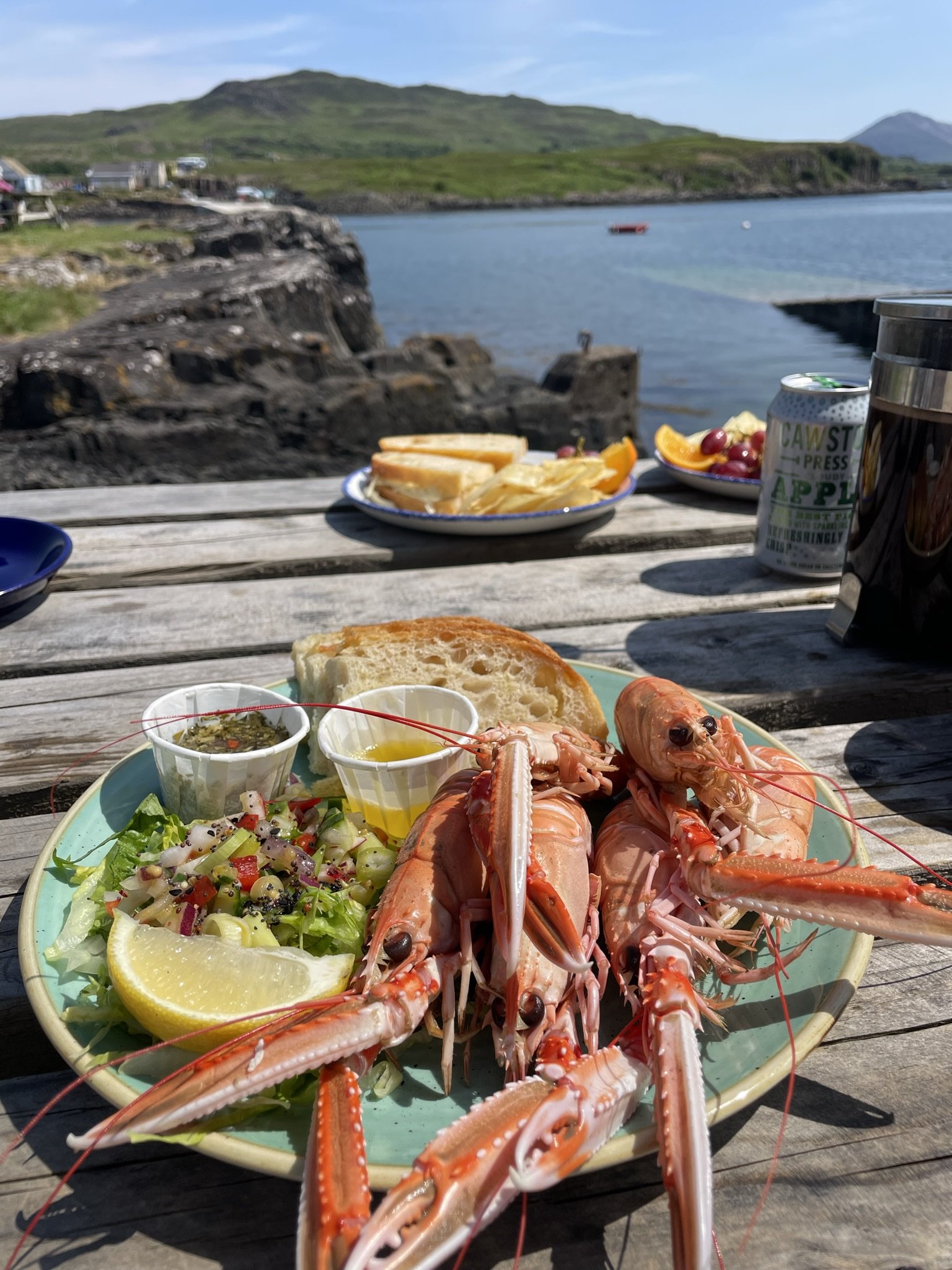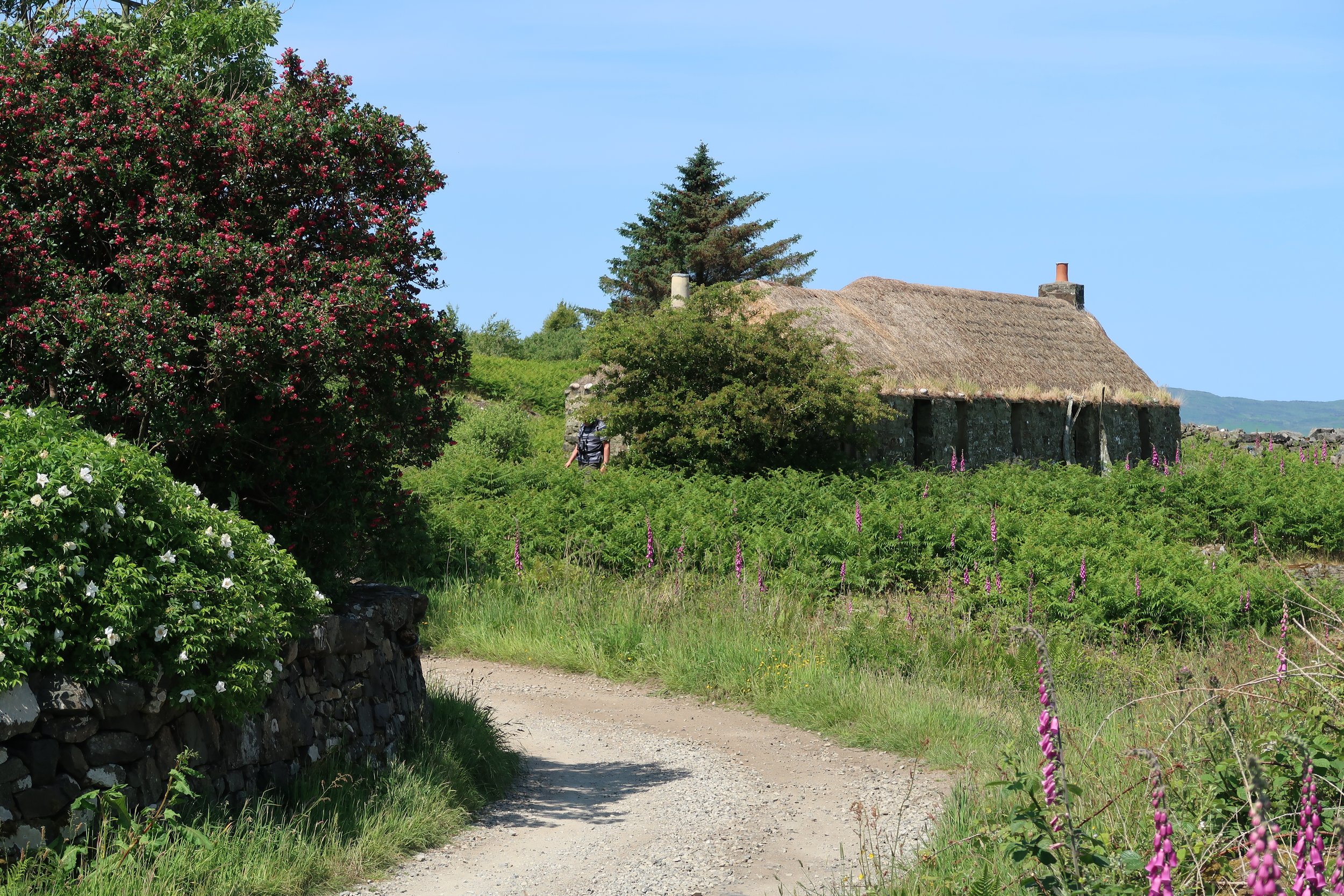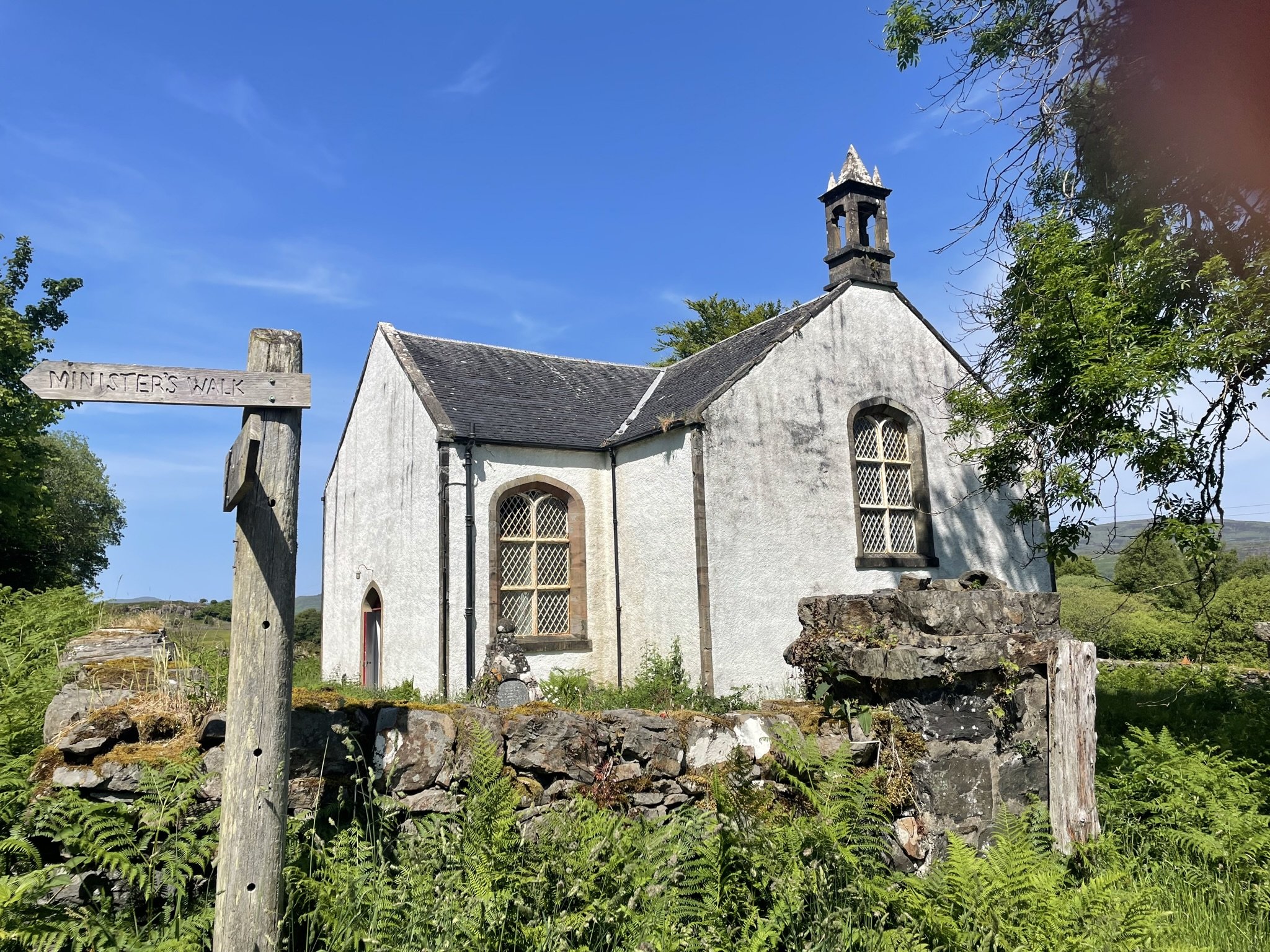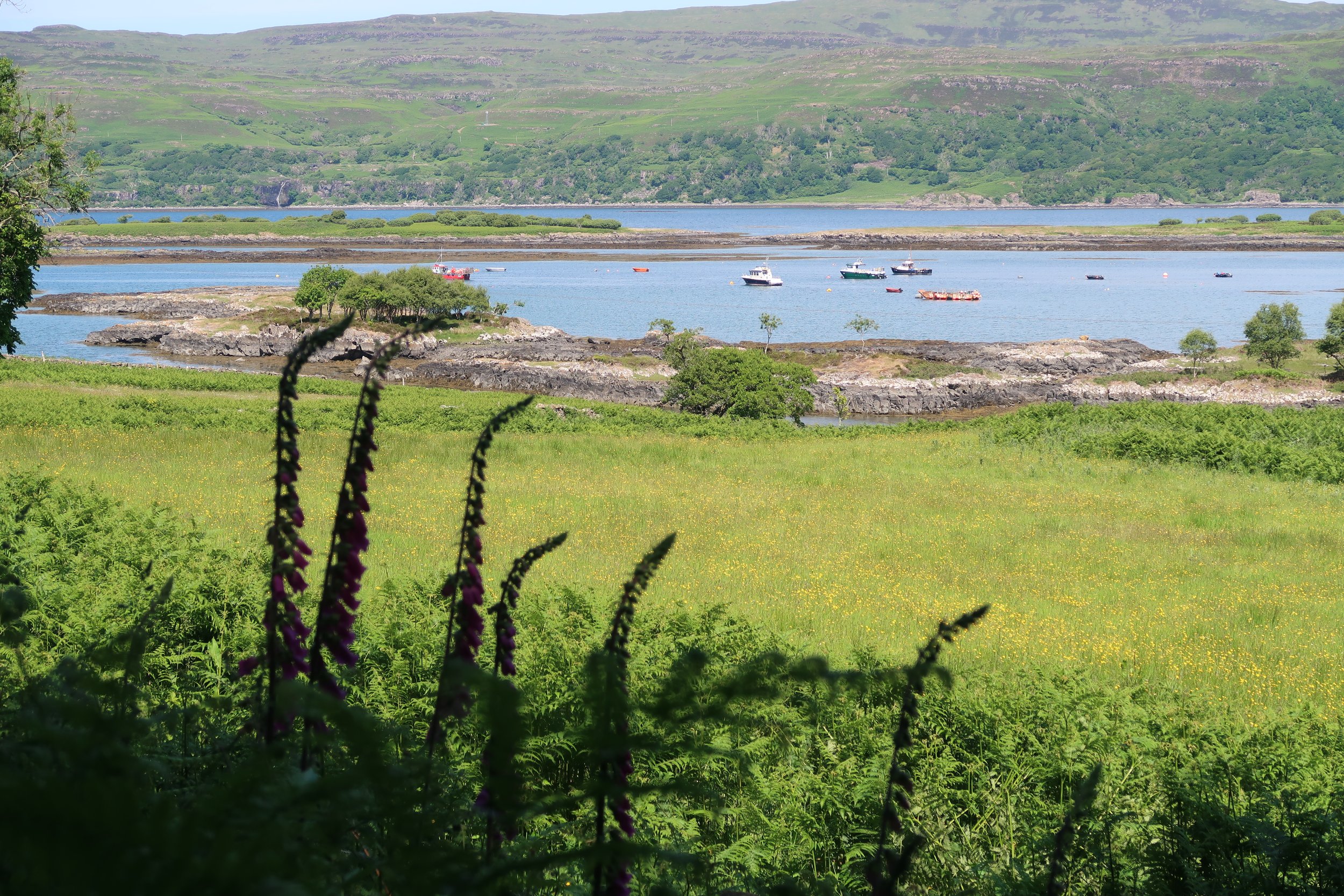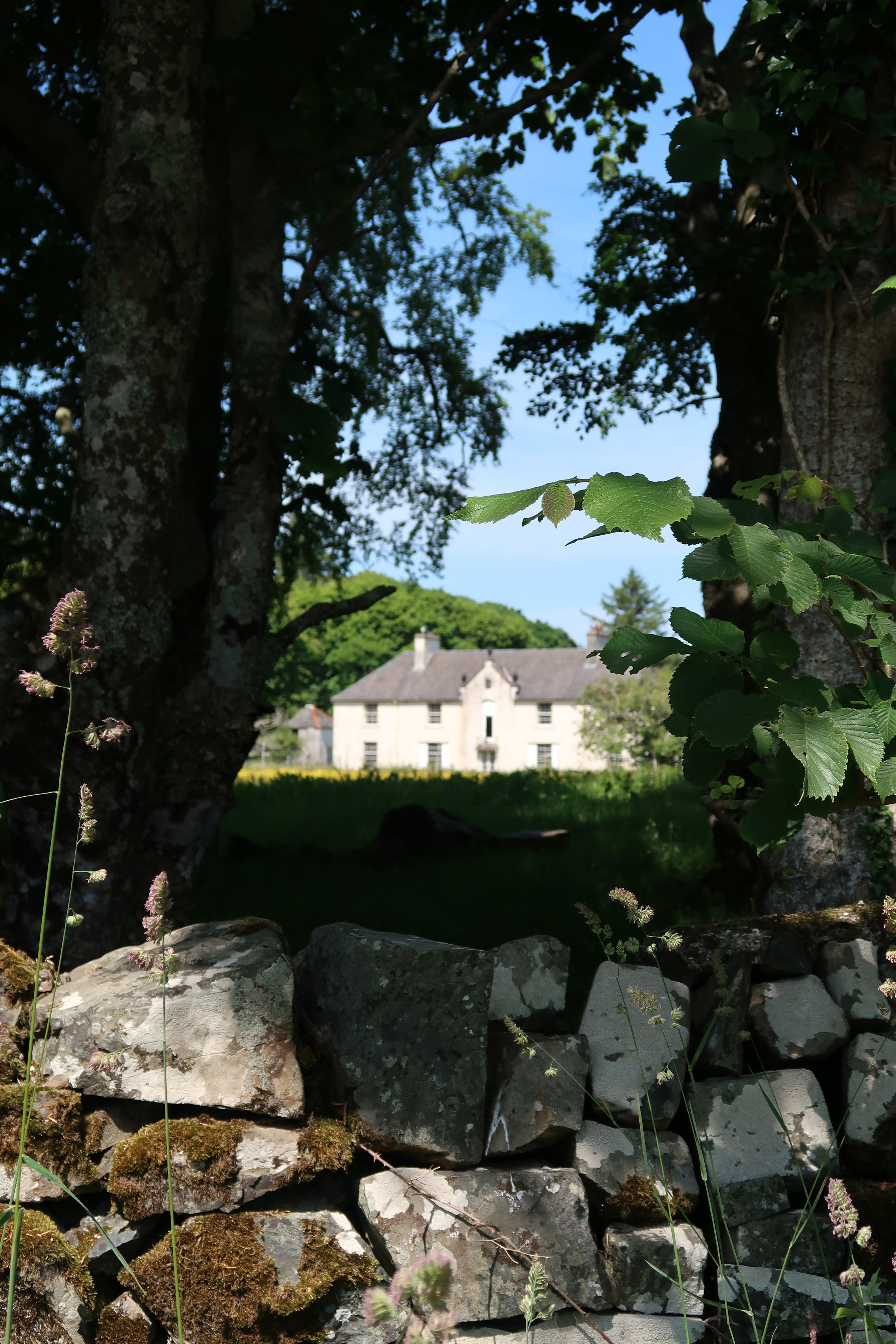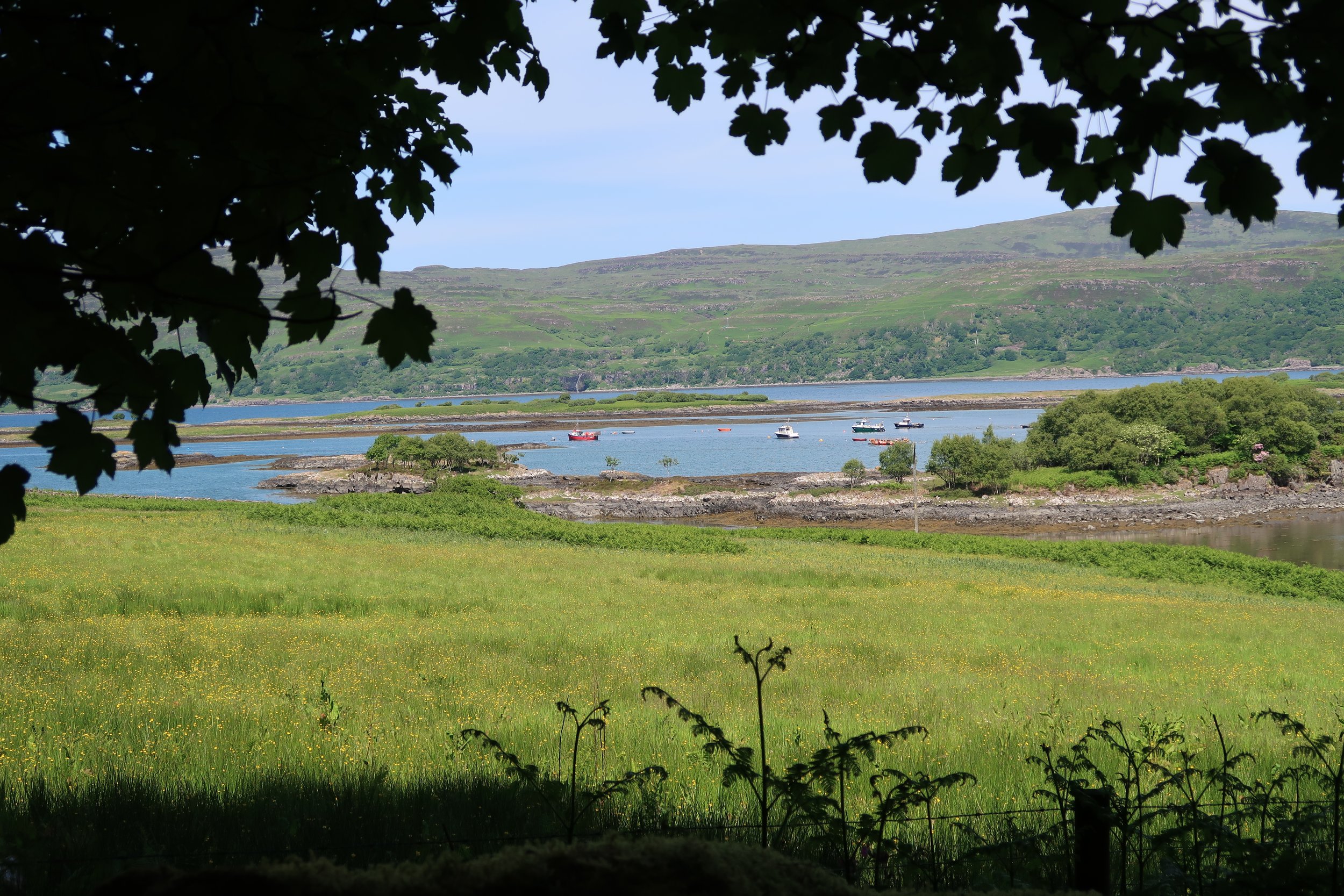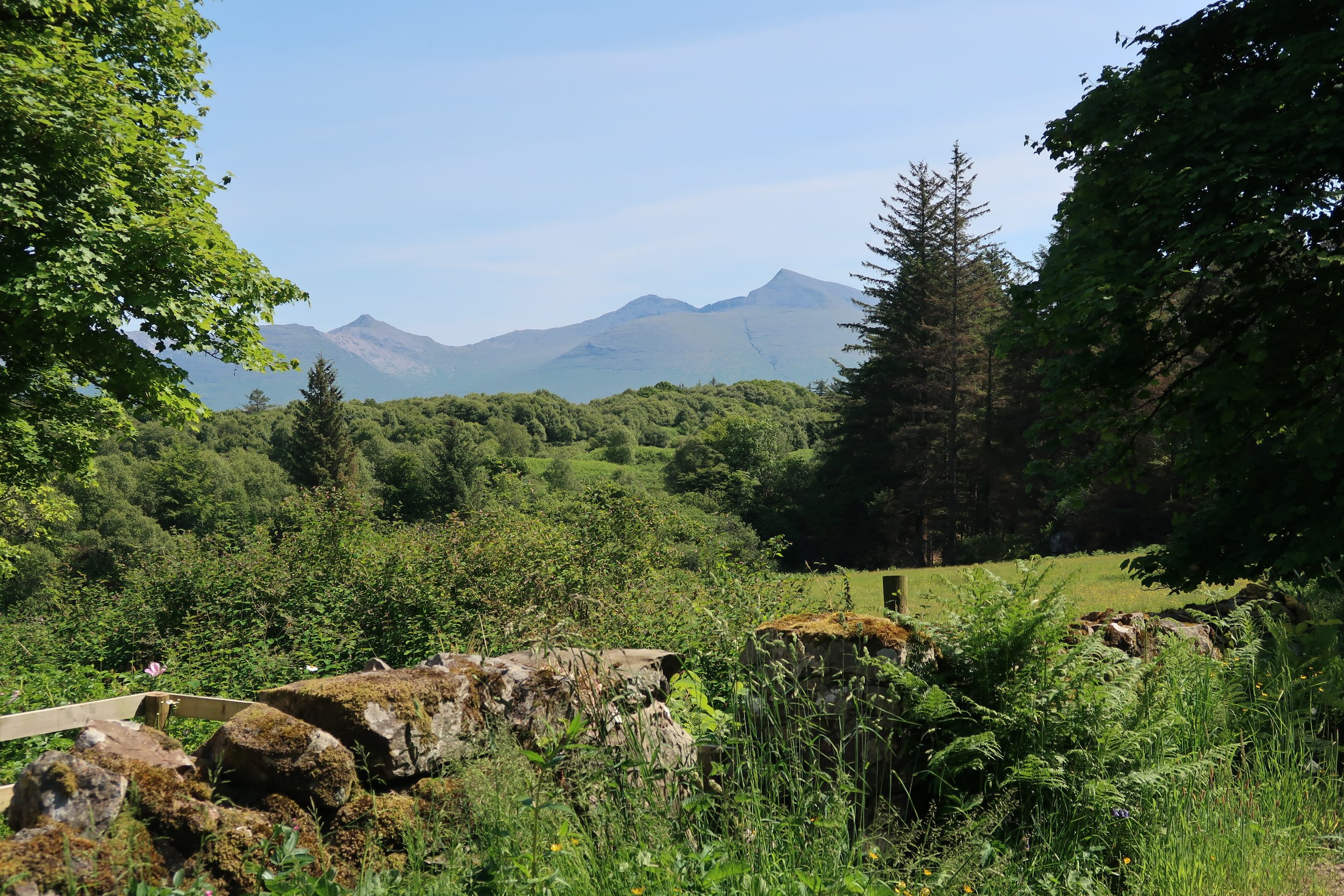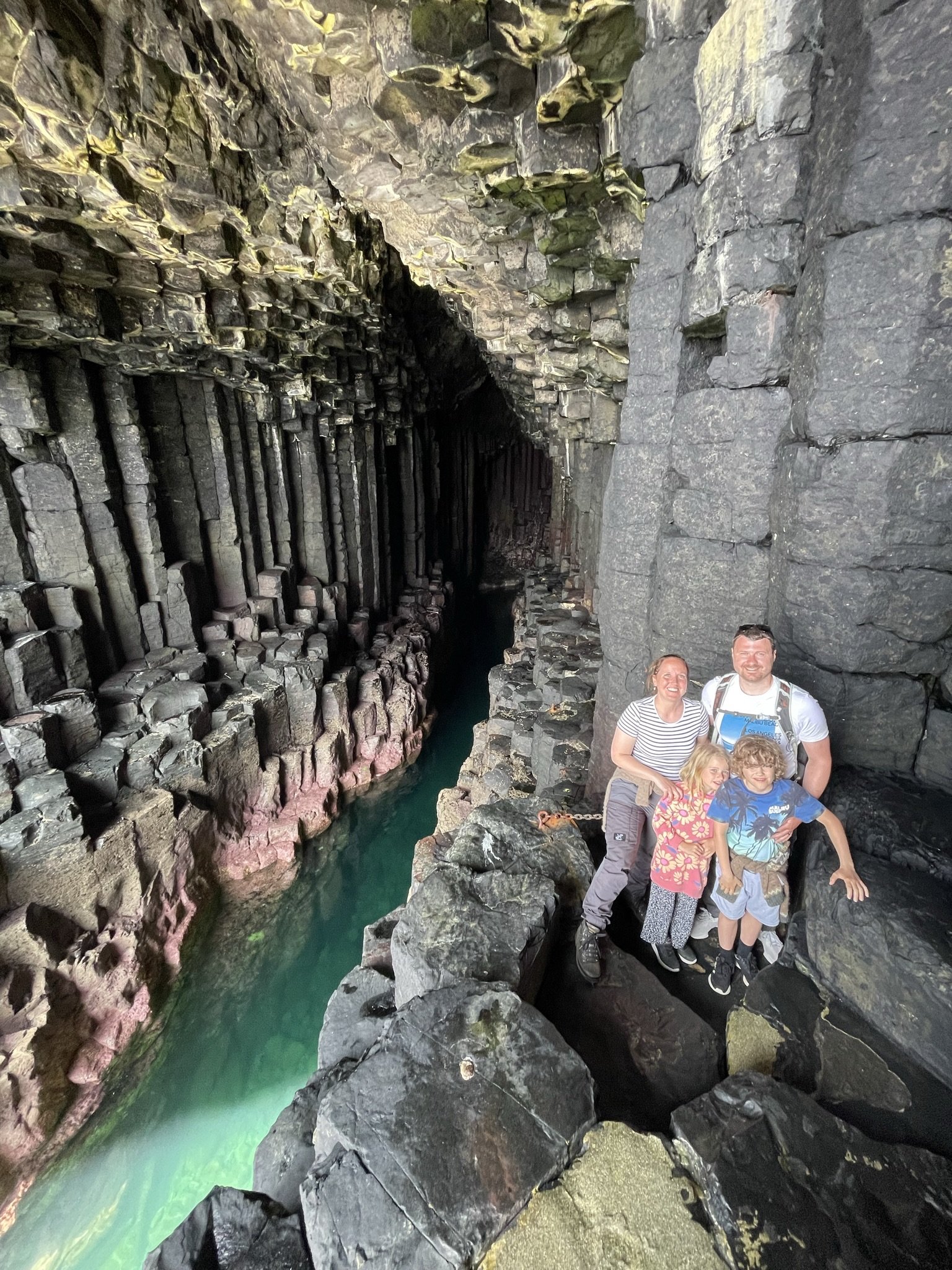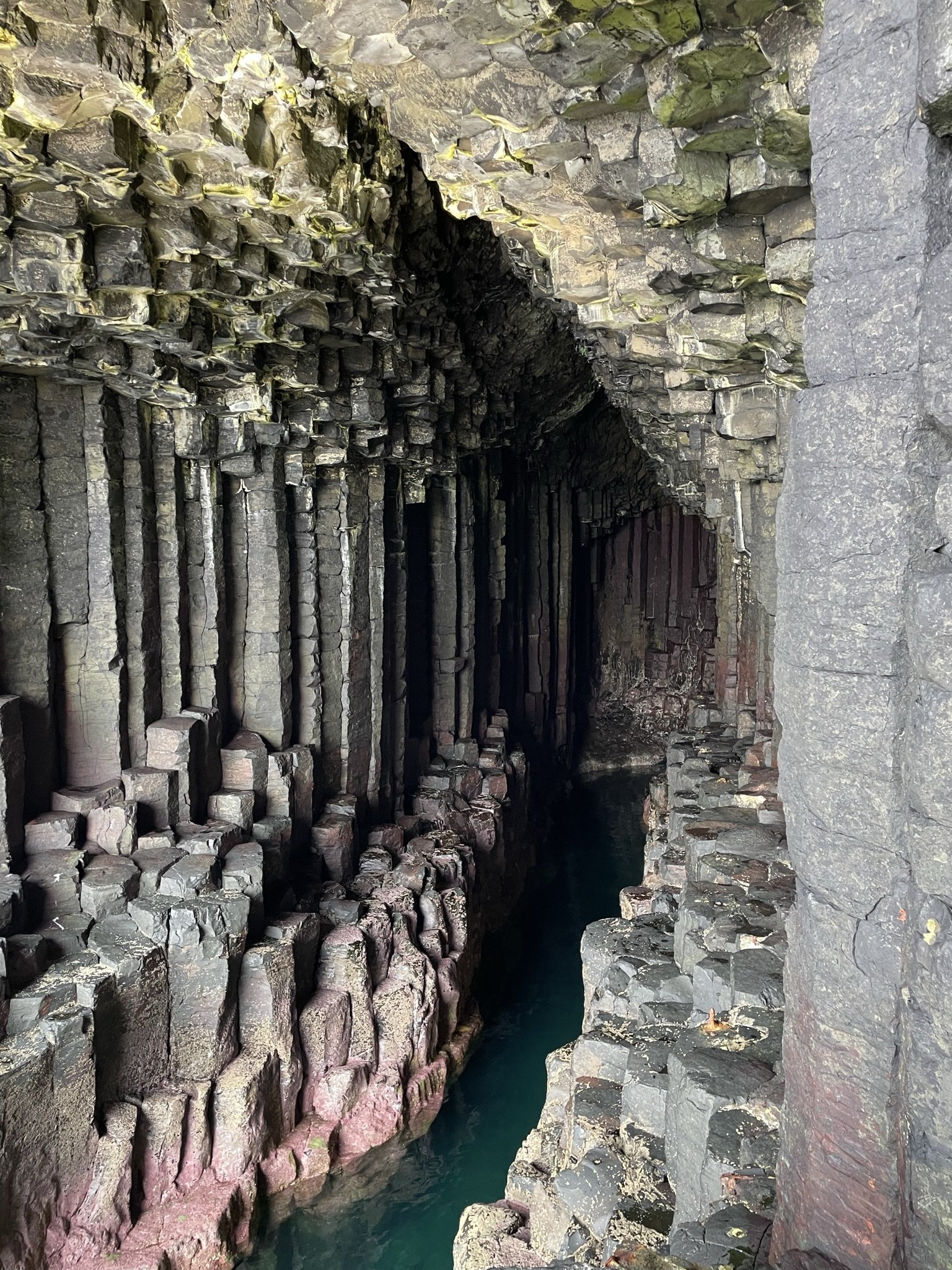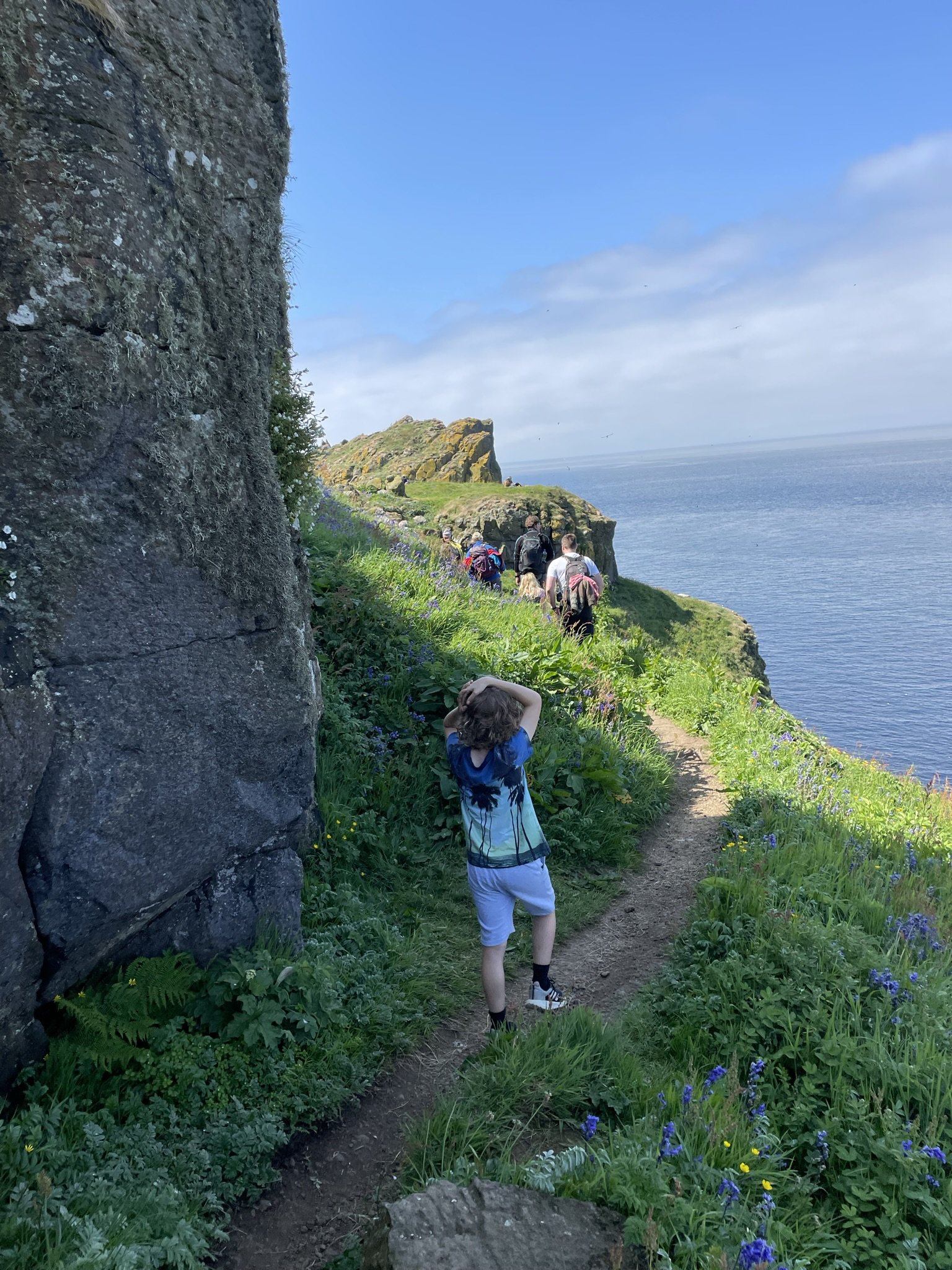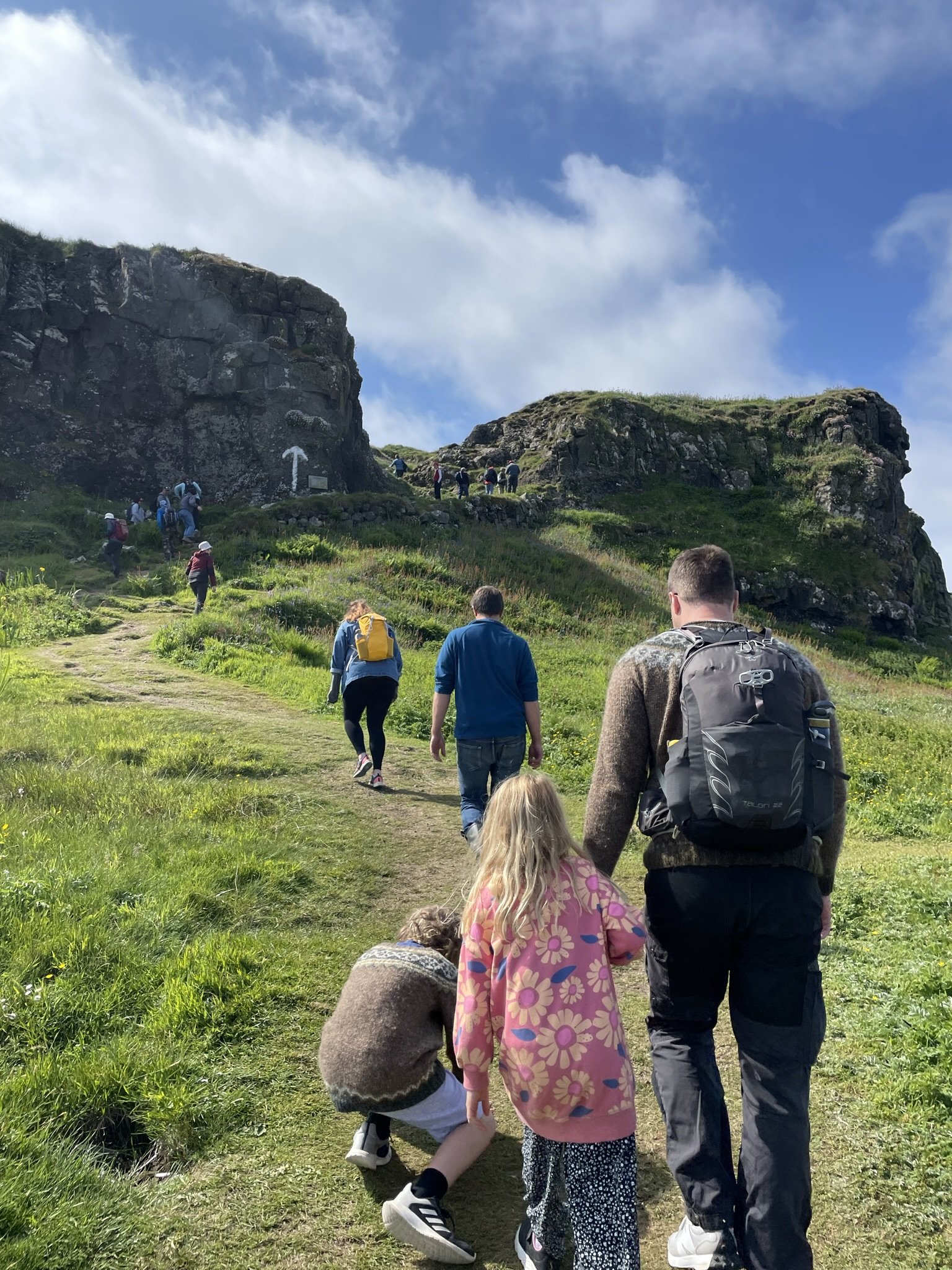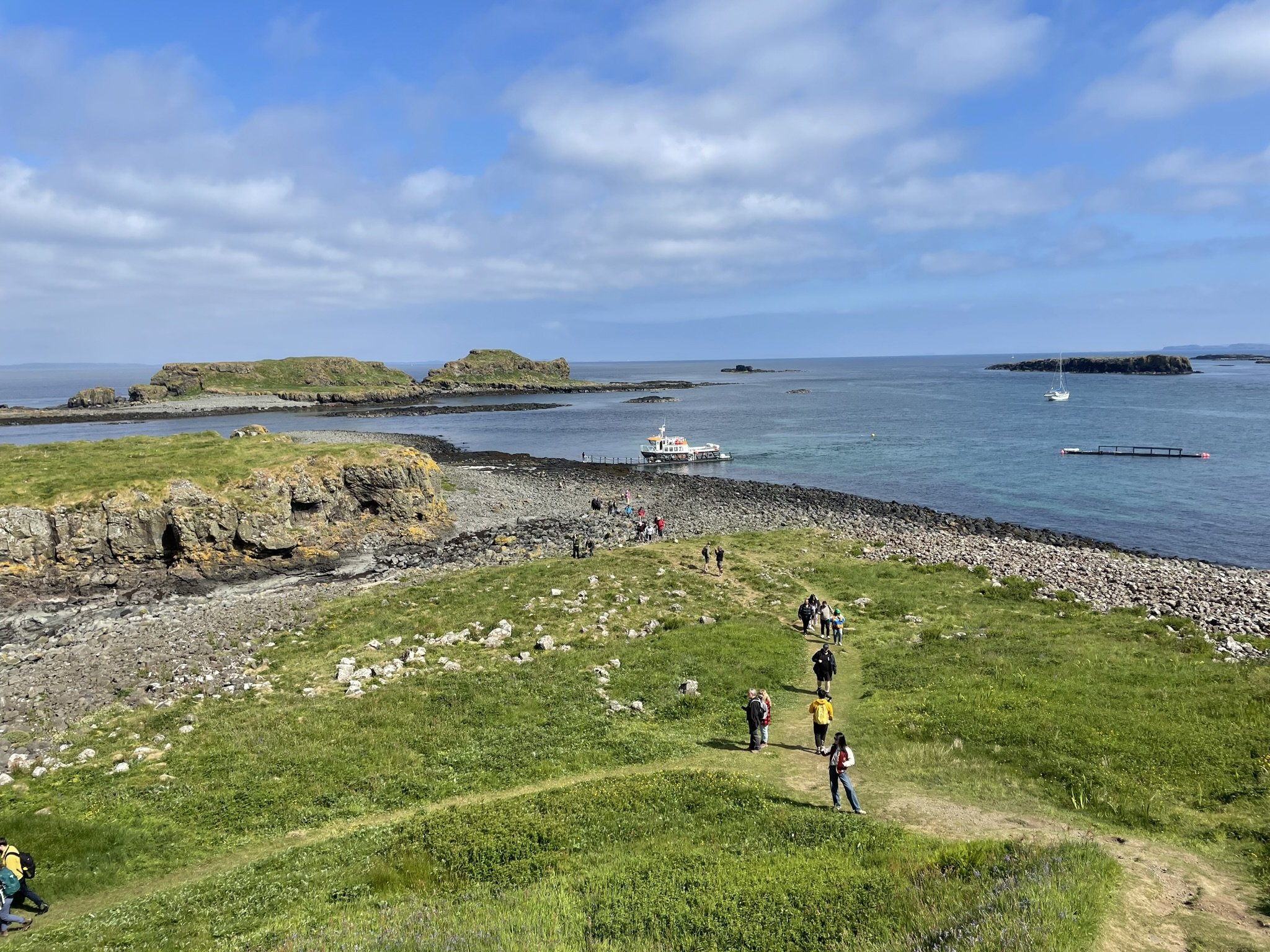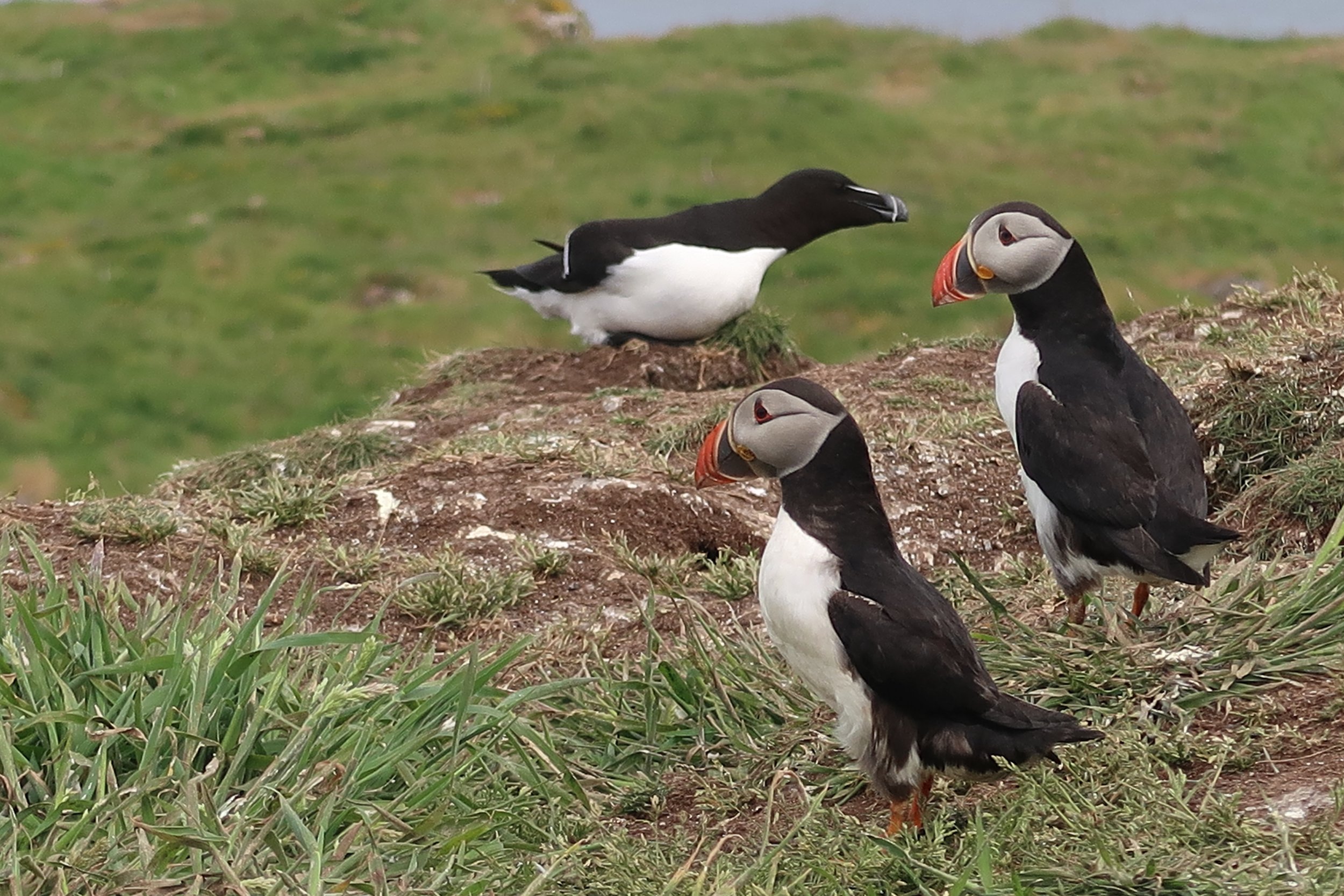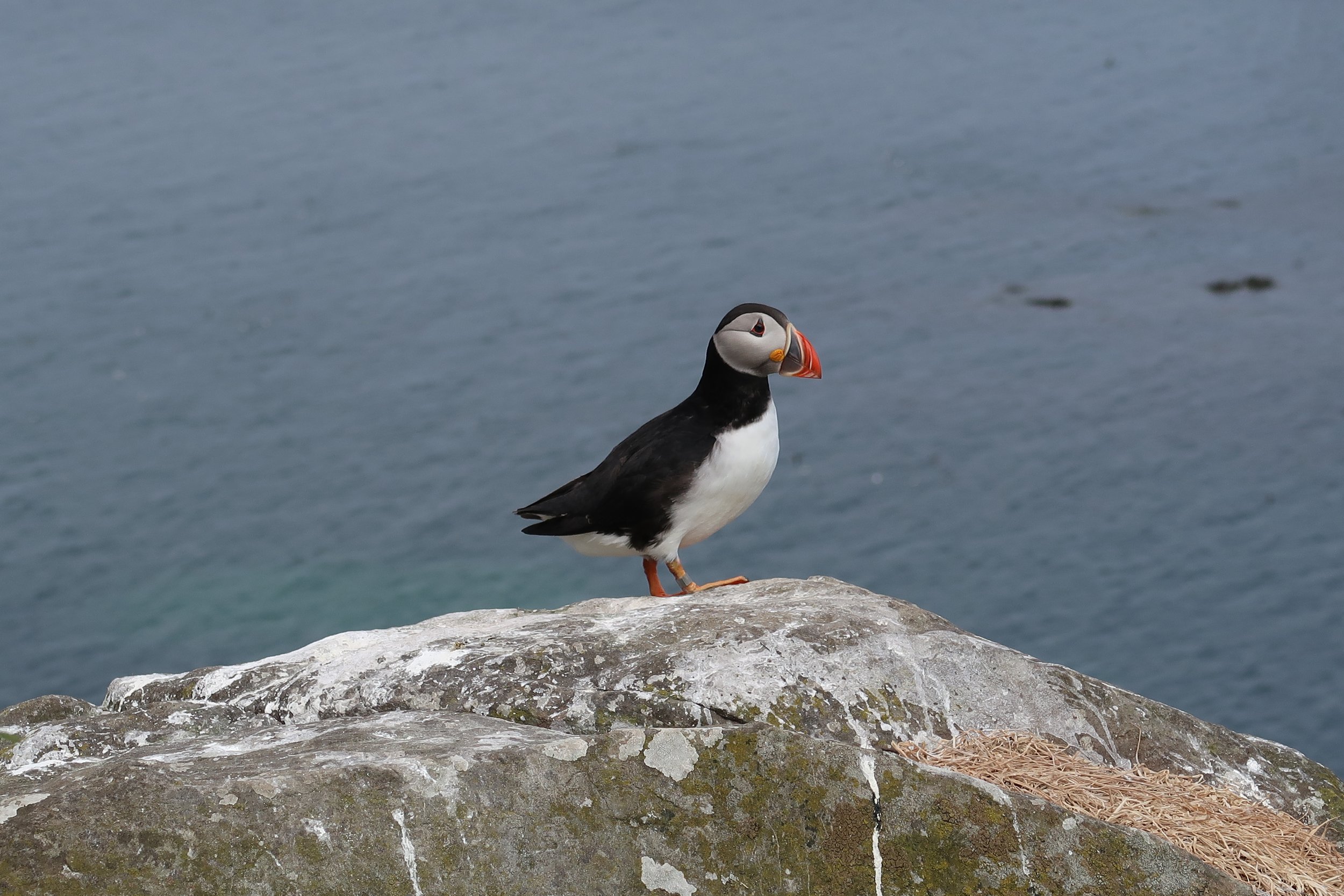Exploring the islands – Iona, Ulva and the Treshnish Isles
Iona beaches
This blog is part of a campaign I did with Isle of Mull Cottages in June.
I adore islands and love nothing more than exploring new ones I’ve never experienced before. I love the process, the planning and poring over ferry timetables, checking weather updates and discovering what makes each island unique and special.
In June, we visited Mull, an ideal springboard for exploring several other islands in the region, including Iona, Ulva and the Treshnish Isles.
I hate the term’ island hopping’; it conjures up images of mindlessly ticking islands from a list in a cavalier-style bid to ‘see them all’. In a way, this is what we were doing, but I hope that this blog will provide a glimpse into what each of these islands is like, what makes them unique and why you should make an effort to visit and explore some of Scotland’s smaller islands in a more immersive way.
Approaching Iona from Mull
Let’s start with Iona
CalMac operates the Iona ferry on a ‘turn up and go’ basis from Fionnphort in Mull. Ferries are frequent, cheap, and only allow foot passengers onto the island. You must have a permit to take a car to Iona, and generally, only islanders are permitted to travel with a car, but the island is small enough that you don’t need one to enjoy the best of the island.
Iona is a gem of an island that I fell in love with before we even reached the pier. From the glistening turquoise seas and white sandy beaches to the prominent silhouette of the Abbey and the dominating, craggy mass of Dun I, the island’s highest hill. Iona’s distinctive profile, off Mull’s southwest coast, calls to be explored.
The island’s varied geology creates a rich tapestry of colour, warmth and form within the landscape, with two main rock types making up the island. Lewisian Gneiss’ rocks are over 2,000 million years old, and the younger ‘Iona Group’ rocks are altered sedimentary rocks dating back 1,000 million years. With bands of rich red granites, seams of marble, and beaches strewn with beautiful sea-worn pebbles, backed with flower-rich machair, Iona is a real treat to discover.
Iona is a quintessentially Hebridean island and has everything you would expect from the Hebrides: white sand, turquoise bays and stunning landscapes. Often described as a ‘thin place’, Iona is an island where the space between this world and the next is said to be as thin as a veil. Many people describe an overwhelming sense of peace on the island and form a deep spiritual connection with Iona.
Spiritually, Iona has long been a place of pilgrimage, and the Abbey was one of the first places we stopped to visit.
Iona Abbey is one of Europe’s oldest places of Christian worship and was the focal point of the spread of Christianity throughout Scotland, marking the foundation of a monastic community led by St Columba.
There’s no getting away from it. Iona is a busy island, with lots of visitors arriving each day on the ferry, yet there’s a calm around the island. We visited the Abbey first thing in the morning before the crowds came. We found it to be a peaceful and contemplative experience as we marvelled at the architecture, the history and the great crosses that stand proudly within the grounds.
Afterwards, we took advantage of the fine day and reached the top of Dun I. This is the island’s highest point, and despite only standing at 110 metres tall, it towers over the low-lying island and is an excellent vantage point with views across the Inner Hebrides, including Mull, Islay, Jura, Colonsay, Coll, Tiree, Staffa and the Treshnish Isles – made up of the Dutchman’s Cap, Lunga and Fladda.
Climbing Dun I in Iona
From here, we walked to the island’s north end to explore some of the beaches that make this island such a popular place for visitors. The fractured coastline is sprinkled with glistening white sandy beaches and backed by flower-rich dunes. The White Strand of the Monks Beach (Traigh Ban nam Manach), on the northeast shore, has a bloody past – hard to believe as the sun, reflecting off the pure white sand, blinded us, and the Mediterranean temperatures invited us to strip off our heavy walking boots and cool-off in the crystal-clear waters. This was the site of a Viking raid, which ended in the massacre of the resident monks.
By the time we had explored the beaches, soaked up the sun and dipped our toes in the crystal-clear Hebridean waters, it was time to head back towards the ferry. There’s so much to see and do in Iona; we felt we had only scratched the surface. On the way back, we had a quick mooch around a few shops, including Iona Wool and the Iona Craft Shop, popped into the Heritage Centre and stopped for tea and cake at the Rookery.
Before catching the ferry, we picked up a beautiful pizza from Ailidh and ate it on the beach, with views across towards Mull.
Ulva
Ulva, an island off Mull’s west coast, is surprisingly large, with a small population of almost a dozen. It’s a fascinating island with a rich history, a resilient community and a quiet determination to survive. Like so many of Scotland’s islands, the Highland clearances of the 19th century badly affected the island, which left the population decimated. Today, the community works hard to regenerate the island and bring back housing and industry for the future. Ulva is a real success story who are reversing the trend of depopulation.
Once home to a thriving community, the population dropped to six residents, raising questions about the island’s viability. Following a community buyout in 2017, more residents have moved into the island. Islanders are working hard to renovate the old houses for people to live in, hoping to attract more people to the island.
Getting to Ulva from Mull is easy. Donald Munro operates the small, passenger-only ferry to the island. The service is turn up and go; you display the sign to ‘red’ to signal to the boatman that you’d like to get over to the island. There’s a car park to leave vehicles, and bicycles can be brought into the island. The crossing only takes a few minutes, and the first place you’ll come to is the welcoming Boathouse restaurant, which is well worth a visit to fuel up before a hike.
Ulva is a walker’s island, with rough paths leading through often dense native woodland and bracken. The tracks are well signposted, and you’ll receive an island map as you leave the ferry, which tells you where to go and what to see. If you’re feeling adventurous, you can do the longer hike to the uninhabited island of Gometra.
Walking routes in Ulva
With two bairns in tow, we opted for the shorter Ulva circular, which led first to Sheila’s Cottage, a small museum packed with island information and artefacts, before heading towards the Ulva Kirk. The kirk itself is pretty imposing, built by renowned engineer Thomas Telford and designed to hold a congregation of 300; it stands as a testament to the once-thriving population who made Ulva home.
We then went around the island, passing several of the dispersed houses and farm and through the beautiful gardens maintained by the islanders who welcome visitors to explore. It was a hot day, and the trees offered a welcome break from the blistering Hebridean sunshine.
Ulva was a stark contrast to Iona; Ulva is almost entirely wooded with narrow paths that lead you through the island. Between breaks in the trees and bracken, beautiful views lead the eye across the sound towards the mountains and hills of Mull. Yet it’s a resilient and proud island where the handful of islanders work hard to regenerate life in the empty hearths of what was once a thriving community.
I will now explore two islands that are now uninhabited and available to visit by boat trip with Staffa Tours from Mull or Iona.
Staffa
Staffa
At one time, the island of Staffa, a small 33-hectare expanse off the coast of Mull, was inhabited by at least 16 people. Today, the island is uninhabited and only visited by the summer visitors and returning seabirds who nest there each summer from April to August.
Staffa is geologically fascinating, an island formed only 59 million years ago, making it a baby in geological terms, from grand, towering hexagonal basalt columns formed by volcanic eruptions. Staffa’s rock profile is similar to that of the Giant’s Causeway in Northern Ireland and, like the Causeway, has its own giant associated with the island. Fingal was the giant from which the famous Fingal’s Cave takes its name. Fingal’s Cave is known for its outstanding natural acoustics, so good is the sound that the famous composer Felix Mendelssohn was inspired to write his Hebrides Overture (1830) after a visit here.
An element of the magic of this island is taken away by the number of visitors and boat trips who are there at any one time. Still, this is a small price to pay to be able to enjoy the natural beauty of this majestic place. My advice would be to hang back and let the crowds rush towards the cave, and once they’ve snapped their holiday memories, you can go in and enjoy the peace and serenity of the cave in relative peace.
Lunga
Lunga, Treshnish Isles
The Treshnish Islands are a group of eight uninhabited islands and many skerries and rocks found off the coast of Mull. The islands are a designated Site of Special Scientific Interest (SSI), and the largest is Lunga, famous for its incredible seabird colonies. As a Shetlander well used to amazing bird colonies, it takes a lot to blow me away, but Lunga certainly did this – and more.
We first took the opposite path to the rest of the group, who hurriedly scrambled towards the puffins to see the ruins of the homes people occupied until the 19th century when the island was abandoned to the birds.
Lunga was fascinating, and after striding back through the brambles, listening to storm petrels in the stone walls along the way, we headed to the seabird colonies where thousands of birds coexist in a chaotic cacophony of guano and noise. There are many seabirds on the island, with the puffins creating the greatest pull for visitors keen to see these expressive and colourful auks. For me, the razorbills were the star of the show. These generally elusive auks nested so close to the path, and getting so close to them was incredible. The island was a bustling metropolis of seabirds, with guillemots, shags, fulmars and kittiwakes.
The marine environment surrounding the islands is part of the Sea of the Hebrides Marine Protected Area due to the presence of basking sharks and minke whales, and bottlenose and common dolphins are also frequently seen. We were incredibly lucky to spot a humpback whale as we were leaving Lunga, which we could observe from a safe distance as it rose from the water before sinking back down, lifting its tail clear of the water.
I hope this blog has inspired you to visit more of Scotland’s islands and given you a taste of what you can easily do from Mull. We loved visiting these islands, and I would return in a heartbeat. I can recommend Isle of Mull Cottages for excellent accommodation if you want to visit Mull.
Ways you can support my work…

